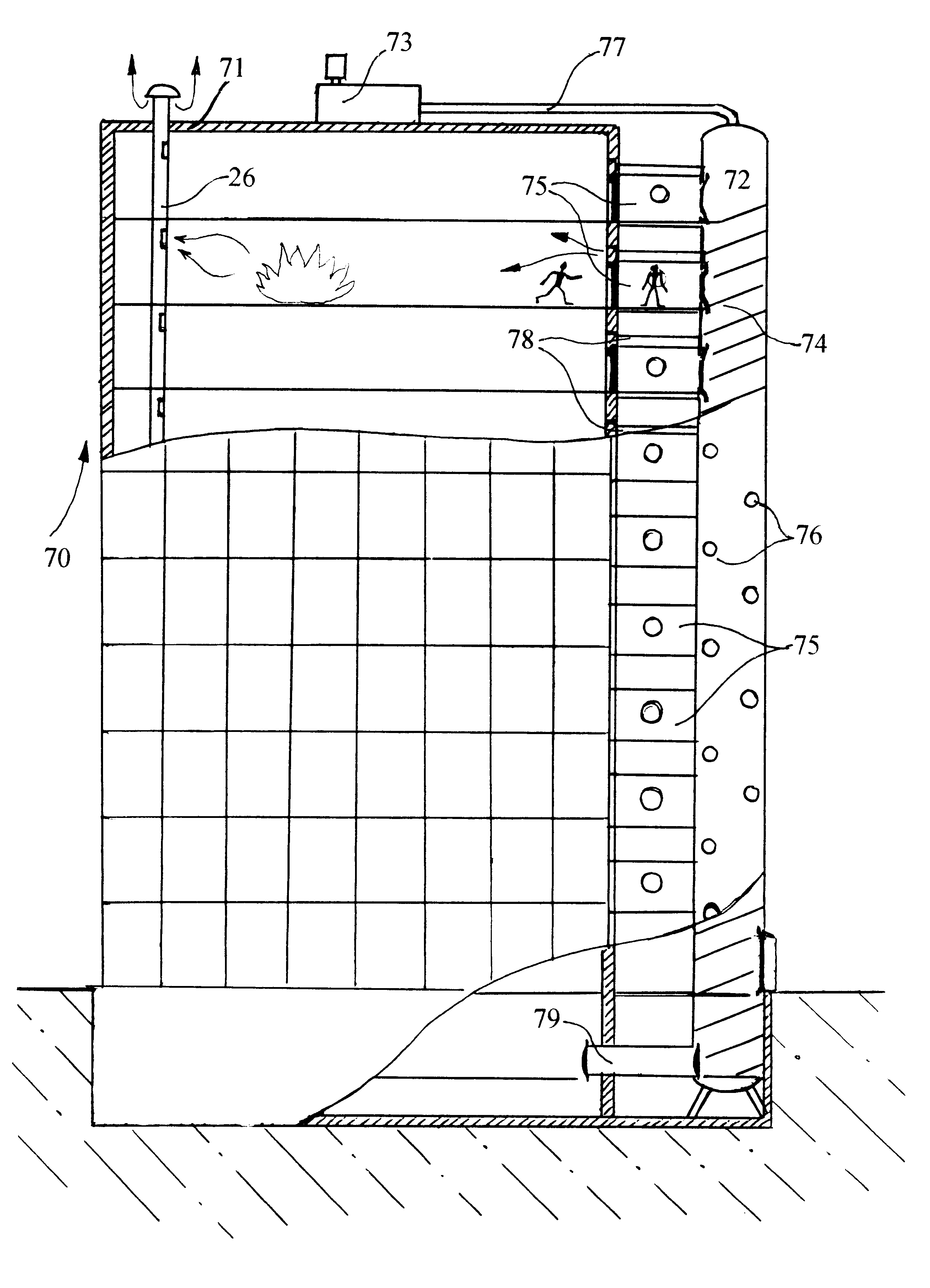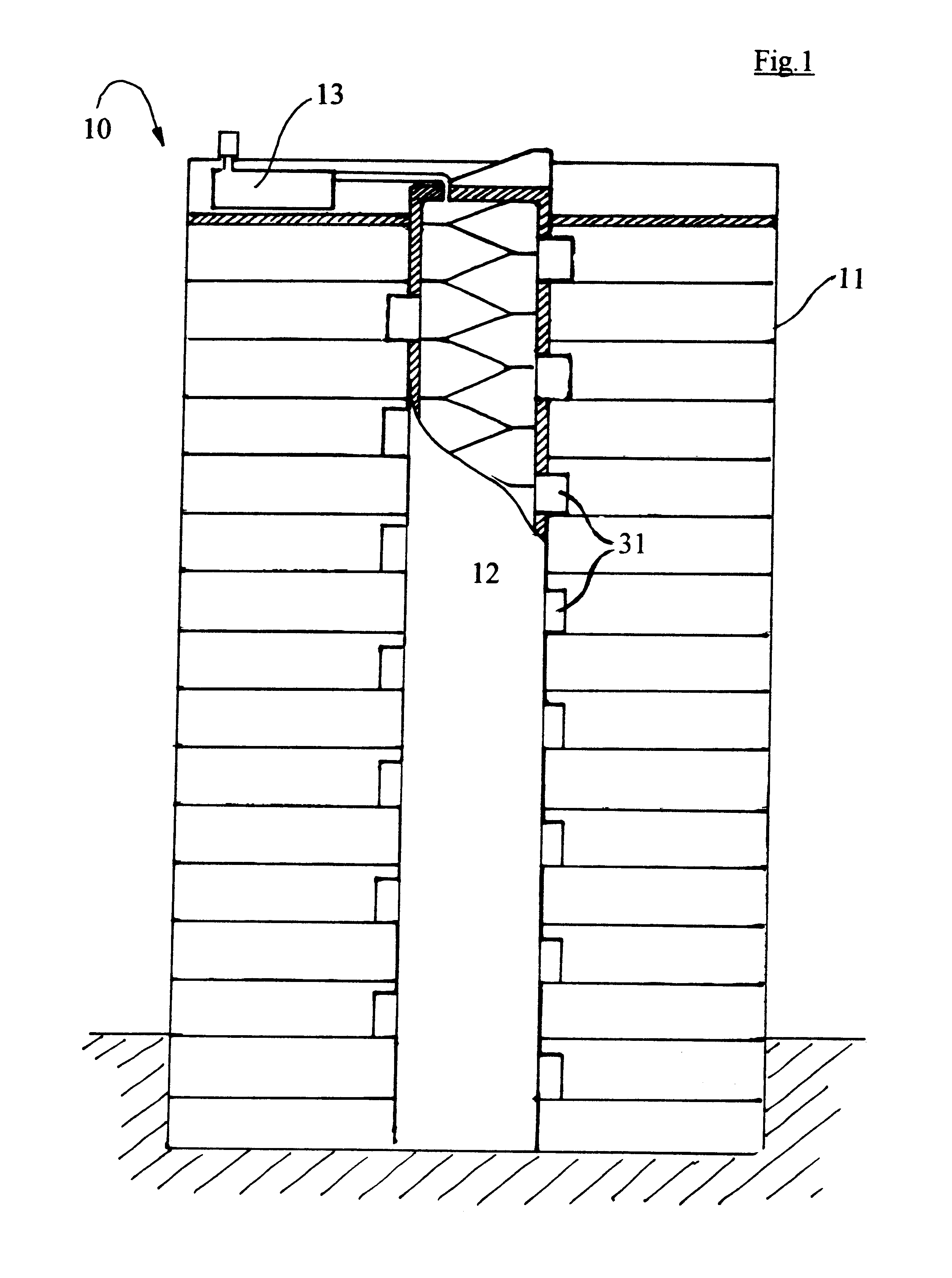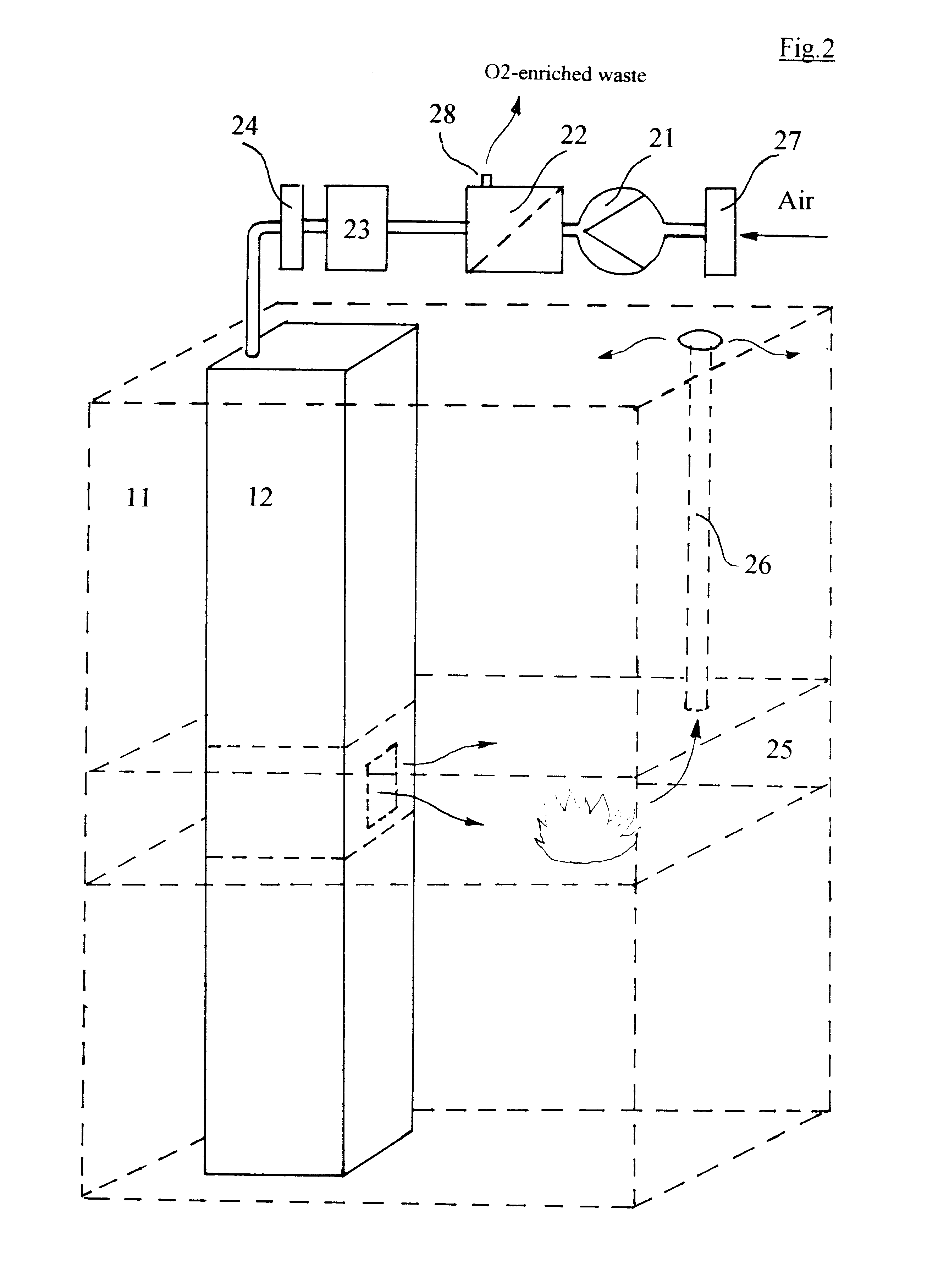Hyperbaric hypoxic fire escape and suppression systems for multilevel buildings, transportation tunnels and other human-occupied environments
a technology of human-occupied environments and fire escape systems, applied in the direction of heating types, container discharging methods, separation processes, etc., can solve the problems of ineffective fire escape suppression systems in buildings, inability and inability to provide modern building design itself to provide reliable escape routes and safety areas for trapped peopl
- Summary
- Abstract
- Description
- Claims
- Application Information
AI Technical Summary
Benefits of technology
Problems solved by technology
Method used
Image
Examples
embodiment 10
FIG. 1 presents a schematic view of the first preferred embodiment 10 of the Hypoxic Hyperbaric Fire Escape and Suppression System (HHFESS) that is most suitable for various types of multilevel buildings and underground facilities.
A building 11 having a pressurized staircase shaft 12 is equipped with hypoxic generation station 13 communicating with the shaft 12 and maintaining in this shaft a hyperbaric atmosphere of hypoxic gas mixture. The hermetic staircase shaft 12 can be build as a monolith steel-reinforced concrete structure having an airlock or pressure-equalizing chamber 31 with two pressurized doors (32 and 33 on FIG. 3) at every floor. In order to access the staircase 12, a user must first open an external door and enter the airlock. After the external door is closed, the internal door opens slowly allowing the barometric pressure inside the chamber to equalize with the hyperbaric pressure inside the staircase shaft. The pressure equalization may be achieved also through a...
embodiment 90
FIG. 9 shows an alternative HHFESS embodiment 90 having external hyperbaric compartment 92, similar to 72, and communicating with building 91 through a pressurized piping circuit 94 having a vertical gas distribution pipe with gas release nozzles 96. Nozzles 96 are equipped with gas release valves, similar to 82, and can be actuated by a signal from a fire detection system, in which case the hyperbaric hypoxic composition contained in compartment 92 under pressure of 5 or more atmospheres is released into the floor or room affected by fire. A significant benefit of the use of hyperbaric composition is that upon release it becomes very cold due to depressurization, which will help to suppress fire by additional thermal absorption. As soon as the pressure in the system 92-94 drops, automatic valves 97 and 98 close and hypoxic generator 93 starts pumping hypoxic air with 14% O2 through the vertical part of pipe 94 and open nozzle 96 into the same floor maintaining breathable fire-extin...
PUM
| Property | Measurement | Unit |
|---|---|---|
| relative gauge pressure | aaaaa | aaaaa |
| relative gauge pressure | aaaaa | aaaaa |
| absolute pressure | aaaaa | aaaaa |
Abstract
Description
Claims
Application Information
 Login to View More
Login to View More - R&D
- Intellectual Property
- Life Sciences
- Materials
- Tech Scout
- Unparalleled Data Quality
- Higher Quality Content
- 60% Fewer Hallucinations
Browse by: Latest US Patents, China's latest patents, Technical Efficacy Thesaurus, Application Domain, Technology Topic, Popular Technical Reports.
© 2025 PatSnap. All rights reserved.Legal|Privacy policy|Modern Slavery Act Transparency Statement|Sitemap|About US| Contact US: help@patsnap.com



